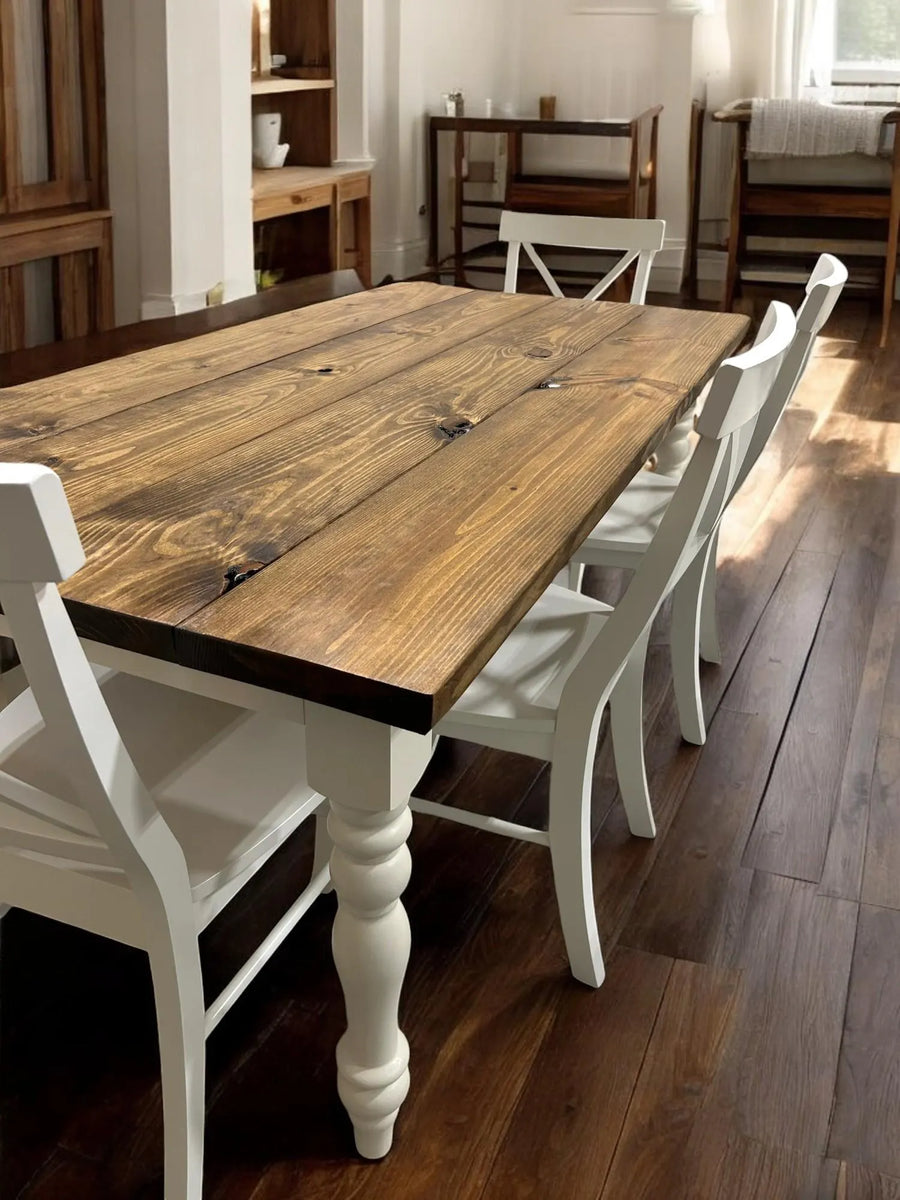Exploring the Different Kinds Of Table Legs Wood for Your Dining Room
The selection of dining table legs wood can profoundly affect both the practical and aesthetic qualities of your dining area. Solid wood choices, such as oak and walnut, give a traditional appearance with unparalleled toughness, while engineered timber options offer ingenious styles that mimic the richness of natural grains.
Strong Timber Options

In addition, strong timber is renowned for its toughness and long life. Unlike crafted products, strong wood is less susceptible to bending and damages with time when correctly preserved. This makes it an excellent choice for families or those that often host events. Each piece of solid wood is special, showcasing private qualities that contribute to the appeal and personality of the eating table.
Additionally, solid wood can be ended up in various methods, varying from all-natural oils to discolored surfaces, enabling property owners to individualize their furnishings to match their decoration. In recap, picking strong timber for dining table legs not just ensures architectural honesty but likewise enhances the aesthetic allure of the eating area, making it a rewarding investment for any home.
Engineered Wood Alternatives

Plywood, built from multiple layers of timber veneer, is especially solid and steady, making it an exceptional choice for dining table legs. Its layered make-up permits it to hold up against modifications in humidity and temperature level much better than conventional strong wood. MDF, on the various other hand, provides a smooth surface area for paint or veneering, making it possible for designers to attain a polished appearance while preserving architectural integrity.
Particleboard, frequently made use of in affordable alternatives, provides suitable strength and is lightweight, making it easier to take care of. Nonetheless, it may not be as long lasting as plywood or MDF. When selecting engineered timber alternatives, it is important to think about the designated usage and preferred visual. These products not only boost the functionality of dining areas yet also permit higher design flexibility, guaranteeing that contemporary and typical styles can exist together sympathetically.
Reclaimed Timber Features
Recovered wood provides an unique blend of sustainability and personality, making it a significantly popular option for dining table legs. Sourced from old barns, manufacturing facilities, and various other frameworks, redeemed timber personifies a background that new materials merely can additional info not reproduce. Each item brings its very own tale, marked by unique flaws, knots, and varying grain patterns, which my site add to a table's one-of-a-kind visual allure.
Along with its aesthetic charm, reclaimed timber is an eco friendly option. By repurposing formerly utilized materials, it minimizes the need for new lumber, thus aiding to save forests and decrease waste. This straightens with a growing customer preference for sustainable methods in furnishings.
Additionally, reclaimed wood is often extra sturdy than recently gathered timber as a result of its age. The natural drying process that reclaimed wood undertakes results in a denser and more powerful material, making it much less vulnerable to bending and splitting. This enhances the durability of dining tables, enabling them to endure the roughness of daily use.
Softwood vs. Hardwood
When choosing eating table legs, comprehending the distinctions between softwood and wood is important for accomplishing both aesthetic and useful goals. Softwoods, acquired from coniferous trees, such as yearn and cedar, are identified by their lighter weight and simplicity of adjustment. They commonly display an even more rustic look, making them suitable for country-style or informal dining spaces. Softwoods are generally much less sturdy than hardwoods, which can be a factor to consider for families or those seeking longevity in their furniture.
On the various other hand, woods, sourced from deciduous trees like maple, cherry, and oak, are renowned for their thickness, stamina, and longevity. The intricate grain patterns and rich hues of hardwoods provide a advanced and classic appeal, making them suitable for official eating settings. While hardwoods tend to be much more costly and much heavier, their durability versus deterioration typically validates the financial investment.
Inevitably, the selection in between softwood and hardwood for dining table legs ought to align with your design vision, use demands, and spending plan, making certain that your eating space shows your personal design while staying practical in time.

Coatings and Therapies
The aesthetic appeal and longevity of dining table legs can be dramatically enhanced with different coatings and treatments. These processes not only safeguard the wood from damage yet likewise boost its look, permitting it to complement diverse indoor designs.
One typical treatment is staining, which penetrates the wood and enhances its natural grain while including shade. Stains offer an abundant, sophisticated appearance, allowing property owners to match their furniture with existing decoration. On the other hand, clear finishes such as polyurethane or varnish create a safety layer without altering the timber's initial hue, making sure longevity against damage.
Additionally, all-natural oils, like tung or linseed oil, nurture the wood and offer a subtle shine, all while being green. These oils allow the surface area to breathe, preventing dampness accumulation and potential bending.
For those looking for a rustic appeal, weathered or distressed surfaces can be put on produce an aged appearance, including character to the piece. Ultimately, the selection of therapies and coatings depends upon individual preference, wanted aesthetics, and the certain timber type, making it necessary to take into consideration these aspects when selecting table legs for your room.
Conclusion
To conclude, the choice of eating table leg materials substantially influences both the practical and aesthetic facets of a dining linked here area. Strong woods, engineered options, and reclaimed alternatives each offer unique benefits, catering to different choices and needs. Comprehending the distinctions in between hardwoods and softwoods, along with proper finishes and treatments, enables for notified decision-making. Inevitably, the choice of timber type need to align with wanted design, resilience, and ecological factors to consider, boosting the overall dining experience.
The option of dining table legs timber can profoundly impact both the visual and practical high qualities of your dining room - Dining Table Legs Wood. Solid wood options, such as oak and walnut, offer a classic look with unequaled longevity, while crafted wood alternatives offer innovative layouts that imitate the richness of all-natural grains. Strong timber offers a timeless top quality that can boost the overall layout of an eating area. Each item of solid timber is special, showcasing private features that include to the appeal and character of the eating table
Additionally, reclaimed timber is usually extra resilient than newly harvested wood due to its age.
 Ben Savage Then & Now!
Ben Savage Then & Now! Hallie Eisenberg Then & Now!
Hallie Eisenberg Then & Now! Kenan Thompson Then & Now!
Kenan Thompson Then & Now! Barbi Benton Then & Now!
Barbi Benton Then & Now! The Olsen Twins Then & Now!
The Olsen Twins Then & Now!